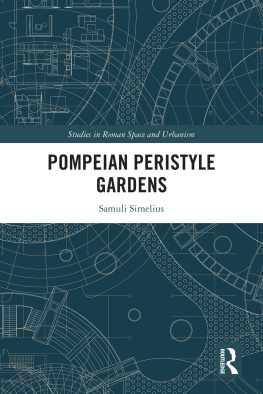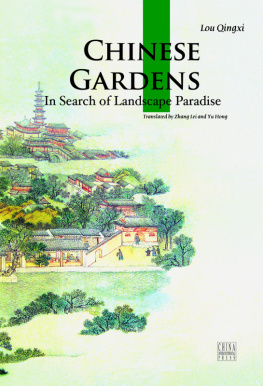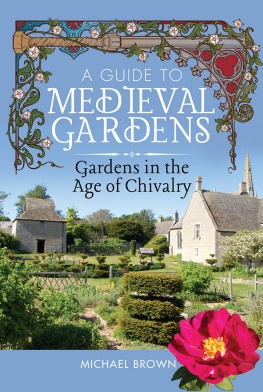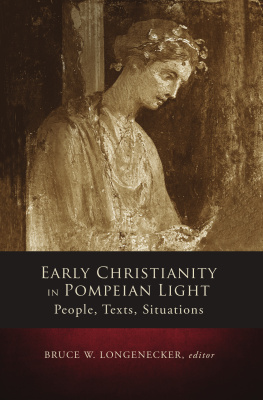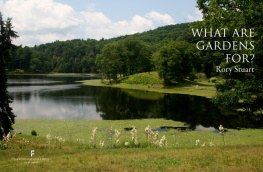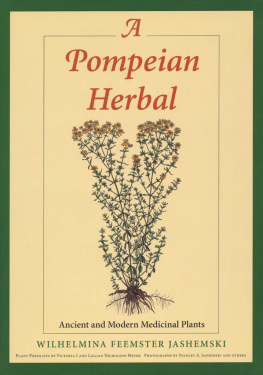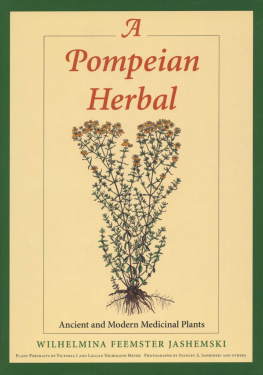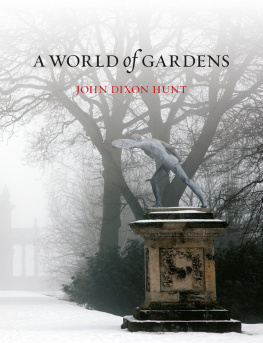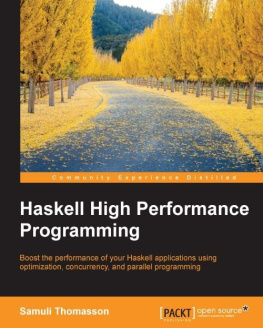Samuli Simelius - Pompeian Peristyle Gardens
Here you can read online Samuli Simelius - Pompeian Peristyle Gardens full text of the book (entire story) in english for free. Download pdf and epub, get meaning, cover and reviews about this ebook. year: 2022, publisher: TaylorFrancis, genre: Children. Description of the work, (preface) as well as reviews are available. Best literature library LitArk.com created for fans of good reading and offers a wide selection of genres:
Romance novel
Science fiction
Adventure
Detective
Science
History
Home and family
Prose
Art
Politics
Computer
Non-fiction
Religion
Business
Children
Humor
Choose a favorite category and find really read worthwhile books. Enjoy immersion in the world of imagination, feel the emotions of the characters or learn something new for yourself, make an fascinating discovery.
- Book:Pompeian Peristyle Gardens
- Author:
- Publisher:TaylorFrancis
- Genre:
- Year:2022
- Rating:4 / 5
- Favourites:Add to favourites
- Your mark:
- 80
- 1
- 2
- 3
- 4
- 5
Pompeian Peristyle Gardens: summary, description and annotation
We offer to read an annotation, description, summary or preface (depends on what the author of the book "Pompeian Peristyle Gardens" wrote himself). If you haven't found the necessary information about the book — write in the comments, we will try to find it.
Pompeian Peristyle Gardens — read online for free the complete book (whole text) full work
Below is the text of the book, divided by pages. System saving the place of the last page read, allows you to conveniently read the book "Pompeian Peristyle Gardens" online for free, without having to search again every time where you left off. Put a bookmark, and you can go to the page where you finished reading at any time.
Font size:
Interval:
Bookmark:

Pompeian Peristyle Gardens
This book examines how Pompeian peristyle gardens were utilized to represent the socioeconomic status of Roman homeowners, introducing fresh perspectives on how these spaces were designed, used, and perceived.
Pompeian Peristyle Gardens provides a novel understanding of how the domus was planned, utilized, and experienced through a critical examination of all Pompeian peristyles not just by selecting a few well-known examples. This study critiques common scholarly assumptions of ancient domestic space, such as the top-down movement of ideas and the relationship between wealth and socio-political power, though these possibilities are not excluded. In addition, this book provides a welcome contribution to exploring the largely unexamined middle class, an integral part of ancient Roman society.
Pompeian Peristyle Gardens is of interest to students and scholars in art history, classics, archaeology, social history, and other related fields.
Dr Samuli Simelius is a teacher of ancient cultures at the University of Helsinki, Finland, and a post-doctoral researcher in the project Law, Governance and Space: Questioning the Foundations of the Republican Tradition (funded by the European Research Council). He wrote his doctoral dissertation on Pompeian peristyle gardens.
Series editor: Ray Laurence, Macquarie University, Australia
Over the course of the last two decades the study of urban space in the Roman world has progressed rapidly with new analytical techniques, many drawn from other disciplines such as architecture and urban studies, being applied in the archaeological and literary study of Roman cities. These dynamically interdisciplinary approaches are at the centre of this series. The series includes both micro-level analyses of interior spaces as well as macro-level studies of Roman cities (and potentially also wider spatial landscapes outside the city walls). The series encourages collaboration and debate between specialists from a wide range of study beyond the core disciplines of ancient history, archaeology and Classics such as art history and architecture, geography and landscape studies, and urban studies. Ultimately the series provides a forum for scholars to explore new ideas about space in the Roman city.
Food Provisions for Ancient Rome
A Supply Chain Approach
Paul James
Urbanisation in Roman Spain and Portugal
Civitates Hispaniae of the Early Empire
Pieter Houten
Space, Movement and the Economy in Roman Cities in Italy and Beyond
Edited by Frank Vermeulen and Arjan Zuiderhoek
Greek Cities and Roman Governors
Placing Power in Imperial Asia Minor
Garrett Ryan
Rethinking the Roman City
The Spatial Turn and the Archaeology of Roman Italy
Edited by Dunia Filippi
Pompeian Peristyle Gardens
Samuli Simelius
For further information about this series please visit https://www.routledge.com/classicalstudies/series/SRSU
Pompeian Peristyle Gardens
Samuli Simelius

First published 2022
by Routledge
4 Park Square, Milton Park, Abingdon, Oxon OX14 4RN
and by Routledge
605 Third Avenue, New York, NY 10158
Routledge is an imprint of the Taylor & Francis Group, an informa business
2022 Samuli Simelius
The right of Samuli Simelius to be identified as author of this work has been asserted in accordance with sections 77 and 78 of the Copyright, Designs and Patents Act 1988.
All rights reserved. No part of this book may be reprinted or reproduced or utilised in any form or by any electronic, mechanical, or other means, now known or hereafter invented, including photocopying and recording, or in any information storage or retrieval system, without permission in writing from the publishers.
Trademark notice: Product or corporate names may be trademarks or registered trademarks, and are used only for identification and explanation without intent to infringe.
British Library Cataloguing-in-Publication Data
A catalogue record for this book is available from the British Library
Library of Congress Cataloging-in-Publication Data
A catalog record has been requested for this book
ISBN: 978-0-367-64995-1 (hbk)
ISBN: 978-0-367-65000-1 (pbk)
ISBN: 978-1-003-12734-5 (ebk)
DOI: 10.4324/9781003127345
Typeset in Times New Roman
by Deanta Global Publishing Services, Chennai, India
Access the Support Material: https://www.routledge.com/9780367649951
To my father
Cross-section of an atrium
Cross-section of a peristyle
The plans of the Casa della Fontana grande (VI,8,22) and Casa della Fontana piccola (VI,8,23/24)
The portico and the garden of the Casa di Fabio Rufo (VII,16,19)
The average Pompeian peristyle. The number of columns, piers, half-columns or pilasters, and rooms opening onto the peristyle corresponds to the actual average. The pilasters and half-columns are considered to be the same feature meaning that the average peristyle might have two half-columns, two pilasters, or one of both as illustrated. The rest of the reconstructed elements (such as the room sizes) are an artistic expression
The median Pompeian peristyle. The number of columns, piers, half-columns or pilasters, and rooms opening onto the peristyle corresponds to the actual average. The pilasters and half-columns are considered to be the same feature meaning that the median peristyle might have a half-column or a pilaster. The rest of the reconstructed elements (such as the room sizes) are an artistic expression
The size distribution of the houses with peristyle, with a red line illustrating how I see the data behavior. (Total number: 224)
A part of the large garden painting of the peristyle of house VII,6,7 (now in the MANN). The left leg of Venus might appear to be in an unnatural posture to the eyes of a modern viewer. (Su concessione del Ministero della Cultura Museo Archeologico Nazionale di Napoli)
The number of peristyles with each building technique. The figure excludes opus incertum, which can be found in every peristyle with known wall-building techniques (Total: 251)
The building materials used in peristyle walls. The figure excludes travertine, which can be found in every peristyle where information on the building materials is available (Total number: 251)
Correlation of peristyle size with house size, and linear trendline (Total number: 248)
The peristyles organized by their size, with lines illustrating how I see the data behavior (Total number: 250)
Correlation of house area and column height, with linear trendline (Total number: 128)
The correlation between peristyle area and column height, with a linear trendline (Total number: 128)
The correlation between the number of porticoes, the peristyle area, and the number of columns (Total number: 250)
The distribution of full peristyles, the peristyles with two or three porticoes, and gardens with one portico, over the size ranges: less than 50 m2, 50115 m2, 120165 m2, 170300 m2, and greater than 300 m2 (Total number: 250)
The distribution of the number of rooms/spaces opening onto the peristyle, arranged according to the number of peristyle colonnades (Total number: 250)
The distribution of the full peristyles, the peristyles with two or three porticoes, and the gardens with one portico in the houses with size ranges of less than 250 m2, 250505 m2, 506724 m2, 7251,200 m2 and over 1,200 m2 (Total number: 250)
Next pageFont size:
Interval:
Bookmark:
Similar books «Pompeian Peristyle Gardens»
Look at similar books to Pompeian Peristyle Gardens. We have selected literature similar in name and meaning in the hope of providing readers with more options to find new, interesting, not yet read works.
Discussion, reviews of the book Pompeian Peristyle Gardens and just readers' own opinions. Leave your comments, write what you think about the work, its meaning or the main characters. Specify what exactly you liked and what you didn't like, and why you think so.

